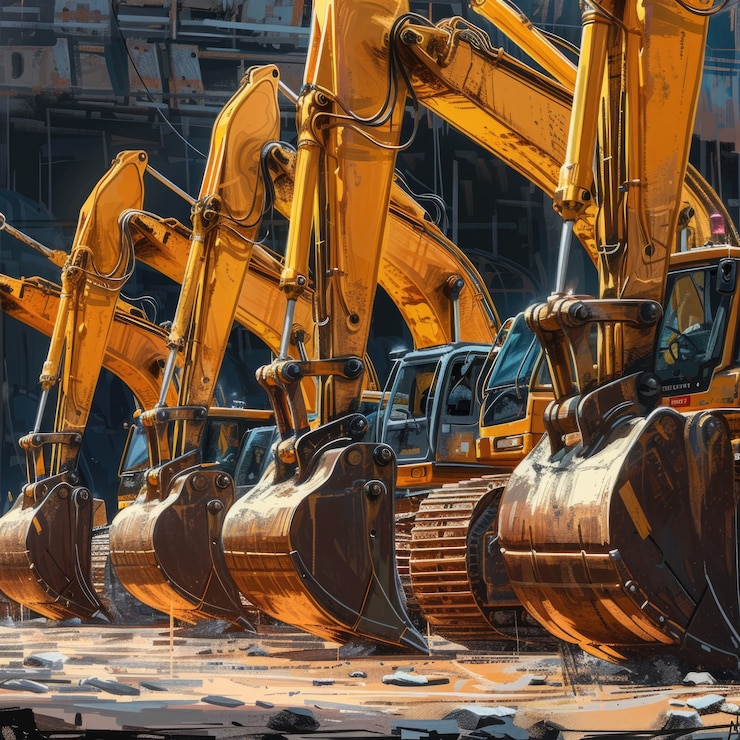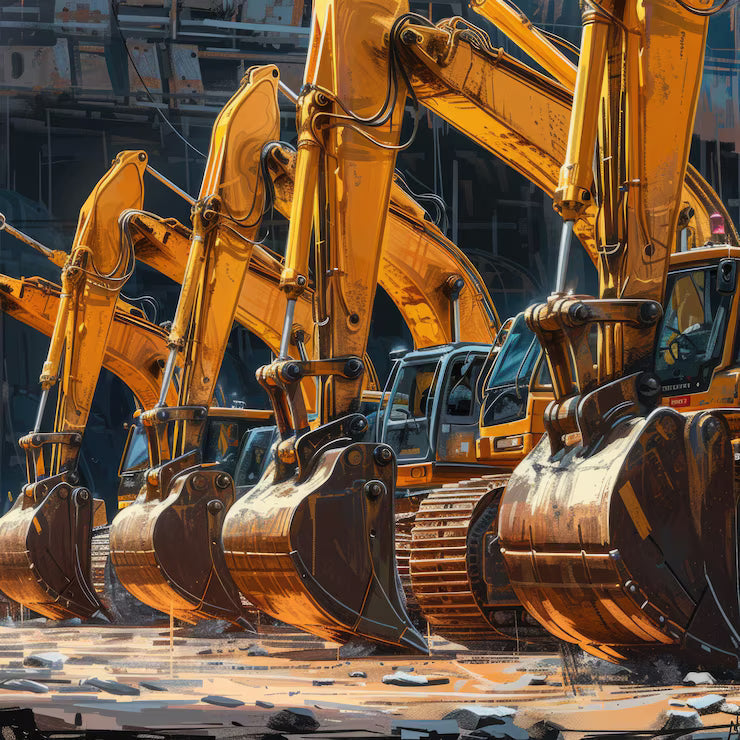Petrol Construction Equipment
Petrol Construction Equipment: Power That Keeps Projects Moving

When electricity isn’t available, petrol construction equipment steps in as the unsung hero. Known for its reliable power, easy mobility, and independence from cords or generators, petrol-powered tools help crews stay efficient on fast-paced or remote sites. From demolition saws to concrete mixers, these machines offer the kind of flexibility and performance that projects demand. Let’s explore their functionality, advantages, and how to use and maintain them wisely.
Understanding Petrol Engines in Construction Equipment
Petrol engines are trusted across construction for their:
- Consistent power output
- Simple mechanics—easy to repair and maintain
- Responsive performance—ideal for short bursts of heavy work
Unlike more complex diesel or electric alternatives, petrol engines are accessible and don’t require specialized maintenance tools. They're a top choice for professionals who value independence and quick deployment.
Key Petrol-Powered Construction Tools
Here’s a look at common petrol tools and where they shine:
| Tool Type | Application |
|---|---|
| Concrete Cutters | Slicing through slabs and pavement |
| Plate Compactors | Soil and asphalt compression |
| Demolition Saws | Cutting masonry and metal |
| Power Trowels | Finishing concrete surfaces |
| Petrol Mixers | Mixing cement, plaster, or mortar |
| Post Hole Diggers | Quick manual digging for fence posts |
Petrol equipment thrives in areas without grid access and where time is of the essence.
Benefits of Petrol Construction Equipment
Why choose petrol-powered tools?
- Off-grid reliability—no cords, no generators
- Portability—easy to move across job sites
- Fuel availability—gasoline is widely accessible
- Strong performance for tough and intermittent tasks
- Quick setup—no charging delays or power configurations
These benefits make petrol equipment ideal for flexible, fast-moving construction environments.
Limitations to Consider
Petrol tools aren’t perfect. Keep in mind:
- Higher fuel consumption compared to electric models
- Routine maintenance needs—spark plugs, filters, oils
- Emissions—not suitable for indoor or enclosed spaces
- Noise levels—may exceed acceptable limits in urban areas
- Operating costs—fuel, spare parts, and upkeep can add up
Weighing these trade-offs helps select the right tool for the job.
Petrol vs. Electric Equipment
Choosing between petrol and electric? Consider these:
| Category | Petrol | Electric |
|---|---|---|
| Power Source | Gasoline | Battery or plug-in |
| Mobility | Fully mobile | Limited by cord or battery life |
| Emissions | Produces CO₂ | Zero emissions |
| Runtime | Continuous with refueling | Limited by battery |
| Maintenance | Frequent oil/filter changes | Minimal maintenance |
| Suitability | Outdoors, remote sites | Indoor, urban sites |
Also explore biofuel blends and sustainable petrol options for greener use.
Maintenance Tips
Maintain your petrol tools to maximize lifespan:
- Clean air filters regularly
- Replace spark plugs as needed
- Use fresh petrol and proper oil ratios
- Clean cooling systems and fuel tanks
- Lubricate moving parts
- Tighten loose bolts and inspect engine mounts
Routine care avoids costly downtime and extends equipment life.
Safety Practices
Operate petrol tools responsibly:
- Wear gloves, goggles, boots, and hearing protection
- Refuel outdoors and away from sparks
- Let engines cool before refueling
- Never run petrol equipment in enclosed spaces
- Train operators on shutdown and safety protocols
A safe site is a productive site.
Environmental Impact
Petrol tools affect the environment through:
- Air pollution—engine exhaust contributes to smog
- Greenhouse emissions—CO₂ fuels climate change
- Noise pollution—affects wildlife and neighborhoods
- Limited sustainability—recycling and fuel alternatives are emerging but not mainstream
Offset impact by choosing fuel-efficient models and practicing mindful use.
Choosing the Right Equipment
Smart selection sets the stage for success:
- Match equipment size and power to task complexity
- Factor in operator skill level and job site conditions
- Balance performance with fuel cost and maintenance
- Choose models with good manufacturer support and spare parts availability
Good choices lead to better workflows and budget control.
Frequently Asked Questions
How long do petrol machines last?
Typically 5–10 years, depending on usage and maintenance. Regular servicing extends their working life.
Can petrol tools be used indoors?
No. Avoid using petrol tools in enclosed spaces due to carbon monoxide risk—always prioritize ventilation.
Are there eco-friendly petrol equipment options?
Some models support biofuel blends, reducing emissions without sacrificing performance.
Final Thoughts
Petrol construction equipment remains a go-to for contractors who need mobility, independence, and raw power. While they come with fuel and maintenance demands, their ability to keep work moving—even off the grid—is unmatched. As the industry evolves, mixing traditional petrol power with sustainable practices is the way forward. Let’s choose tools that get the job done while respecting our planet and teams.




